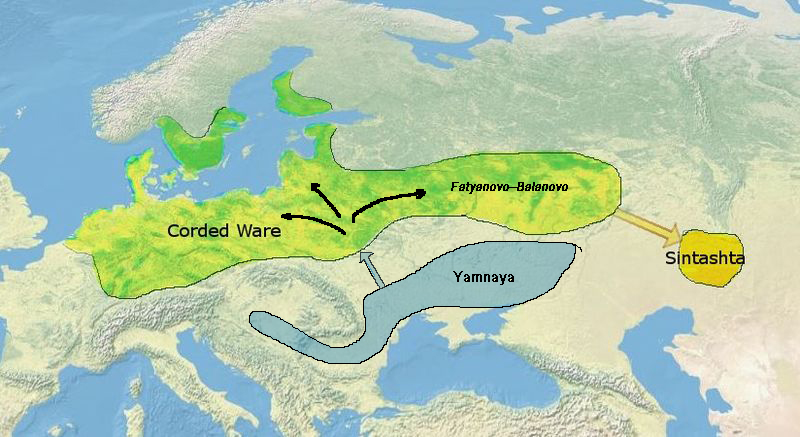Mal'ta was R* and had some Baloch at 24% but overall he was NE-Euro at 40% and 20% American, and missing totally Caucasian admixture. Iranian Neolithic, on other hand was almost made of two sources, Baloch and Caucasian. There was not even a smidge of NE-Euro or American in Iranian Neolithic, to suggest any ancestry coming from people like Mal'ta boy. Both were related through Baloch and S-Indian common ancestor in the far far past, but otherwise quite different people. It is unlikely but still possible that Baloch could have been a source of R or P, but definitely not R1a or R1b.
| Mal'ta | | | Iranian Neolithic 10,000 years | |
| Population | | | Population | |
| S-Indian | 10.13 | | S-Indian | 6.13 |
| Baloch | 24.09 | | Baloch | 62.71 |
| Caucasian | - | | Caucasian | 24.97 |
| NE-Euro | 40.14 | | NE-Euro | - |
| SE-Asian | - | | SE-Asian | - |
| Siberian | - | | Siberian | - |
| NE-Asian | - | | NE-Asian | - |
| Papuan | 0.7 | | Papuan | 0.35 |
| American | 17.71 | | American | - |
| Beringian | 6.74 | | Beringian | - |
| Mediterranean | - | | Mediterranean | - |
| SW-Asian | - | | SW-Asian | 3.88 |
| San | 0.3 | | San | 0.18 |
| E-African | - | | E-African | - |
| Pygmy | 0.19 | | Pygmy | - |
| W-African | - | | W-African | 1.78 |



